Being the two leading eCommerce platforms, Adobe Commerce vs Shopify are currently used by thousands of merchants in the world. However, which solution will be worth adopting to optimize your business sales? For a clear answer to this question, don’t miss our evaluations below.
In this blog, LitExtension, the #1 Shopping Cart Migration Expert will have detailed comparisons of the following features of Adobe Commerce vs Shopify to help you have an optimal option for your store:
- Pricing plans
- Scalability
- Customization
- Themes and templates
- Apps and extensions
- Sales features
- SEO
- Customer supports
Let’s get in!
Ecommerce Migration Made Easy With LitExtension
Our team of experts can safely transfer your business data, products, customers, and orders to unlock more growth in this promising eCommerce platform. Let us provide a customized migration for you!
Adobe Commerce vs Shopify: At A Glance
Before making an in-depth evaluation of Adobe Commerce vs Shopify, we will introduce basic information about both platforms.
What is Adobe Commerce?
Adobe Commerce is a flexible enterprise commerce platform, that allows users to create seamless experiences with both B2C and B2B models. Basically, Adobe Commerce provides 2 eCommerce versions, including free (Magento 2 Open-Source) and paid (Adobe Commerce or Magento Commerce).
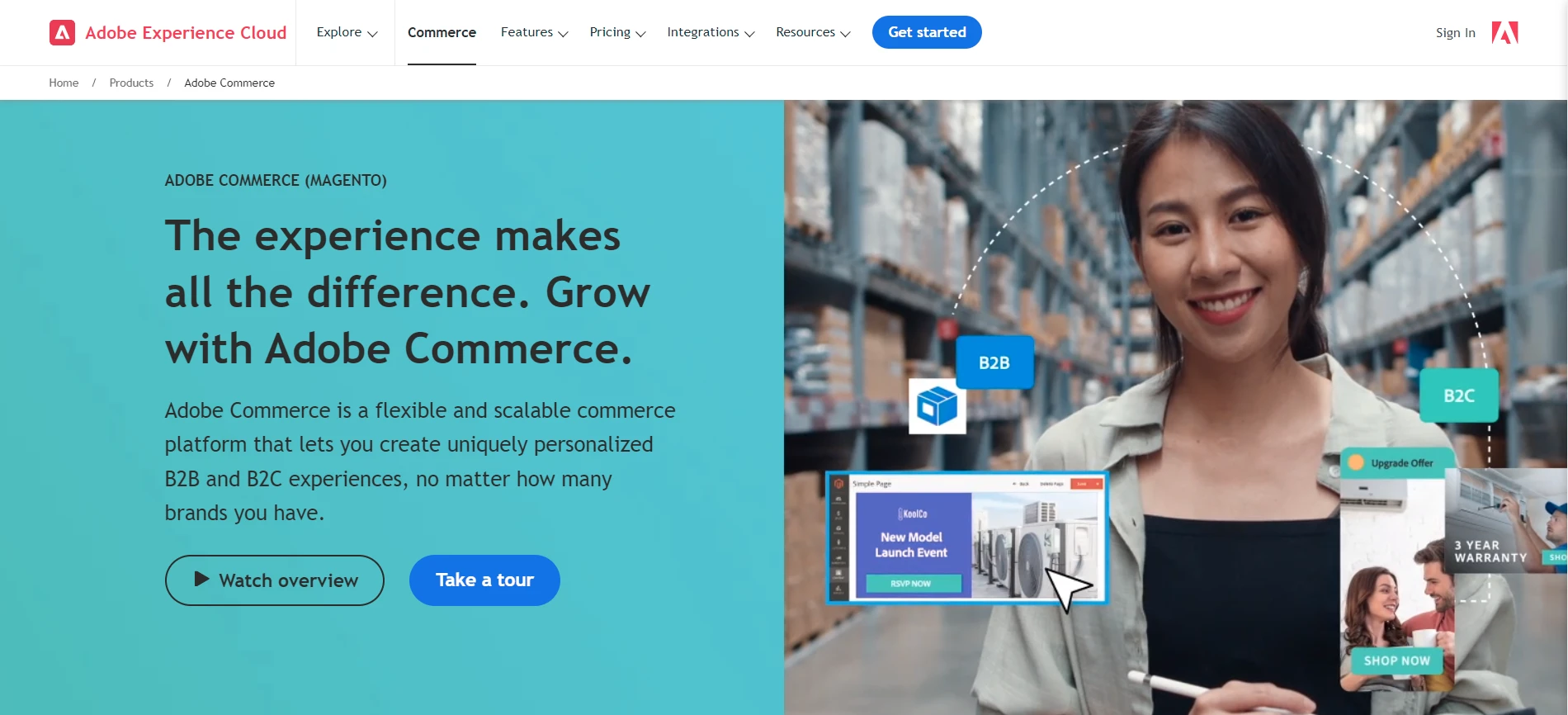
From our experiences, while Magento 2 Open-Source used to be known as Community, Adobe Commerce was previously Magento Enterprise. That’s why many users tend to be confused when reminded of this platform. You can also refer to our comparison of Magento Community vs Magento Enterprise for a deeper understanding.
With the Adobe Commerce version, don’t forget to consider an additional solution called Adobe Commerce Cloud. It is a secure, and adaptable solution for users to maintain business effectively.
However, in this article today, we focus on the differences between Adobe Commerce or Magento Commerce vs Shopify. With this platform, users access advanced tools to enhance their store’s performance in the built-in features, as well as scalability.
What is Shopify?
Shopify is a web-based eCommerce solution that provides powerful functions to manage your online store effectively. It is also highly evaluated thanks to its user-friendly interface dashboard, and a range of professional extensions. Let’s take a look at our in-depth Shopify review blog to understand how it works clearly.

Currently, Shopify provides users with an additional plan called Shopify Plus, which is preferred for large-scale businesses. Basically, this solution can offer you full features of Shopify, but expand its power with additional capabilities in sales and customization. If so, Adobe Commerce vs Shopify Plus might be the advanced solution to their traditional platform.
With our overview of Adobe Commerce vs Shopify above, we hope you will know better about these platforms.
Adobe Commerce vs Shopify – 8 Things Make A Difference
Although Magento Enterprise vs Shopify has many outstanding features, we will show the differences between them in 8 main concerns. They include pricing plans, scalability, customization, themes, apps, SEO, sales, and customer support. Right now, let’s get into detailed comparisons with us!
#1. Pricing plans
Adobe Commerce
To register for Adobe Commerce, you have 2 pricing packages to consider, including Adobe Commerce Pro and Managed Services. With both packages, it’s compulsory to submit your business information to negotiate with the provider for the final cost.
Besides that, you also need to consider 3 fees to operate your online store effectively:
- License fee: It is estimated according to GMV (Gross Merchandise Value) and Average Order Value (AOV). Thus, Adobe Commerce’s license fee varies but starts with a minimum fee of $22,000/year.
- Development cost: You normally need to pay a cost of around $100,000 and $500,000 to maintain your Magento Commerce store. In some cases, it may be much higher.
- Hosting: The hosting service can cost you about $1,000/month, or even much higher. Or else, you can register for Magento 2 Commerce Cloud Hosting for $3,333/month, including hosting and license fees.
Shopify pricing
Basically, Shopify provides users 3 main pricing plans, including:
- Basic Shopify: $39/month
- Shopify: $105/month
- Advanced Shopify: $399/month
Please note that Shopify allows you to try a 3-day-free trial, and experience the 3 first months only with a fee of $1/month. Besides that, if you want to use a list of more powerful functions from this platform, you can register for Shopify Plus for $2000/month.
With these pricing plans, you can completely reach a wide collection of templates to make your storefront outstanding in public sight. And of course, merchants can use various eCommerce tools to optimize your business performance.
Verdict: When comparing Adobe Commerce vs Shopify, the former option tends to charge you higher prices to maintain your online store. Thus, if you have a limited budget, Shopify will be an optimal option.
#2. Scalability
Adobe Commerce scalability
Regarding scalability, Adobe Commerce is one of the most valuable eCommerce solutions you should consider. Specifically, you can:
- Create a professional hub for any brands, sites, and channels
- Offer tons of variants such as colors, styles, lively icons, and so forth
- Locate multi-region and multi-tenant storefronts
- Provide new product catalogs and brands
Shopify scalability
Basically, Shopify is designed to fit all types of e-business. Thus, if you want to expand your store scale, it is still a good option. However, your customization rights might be limited to some extent. In this case, don’t forget to take the support of Shopify Plus to optimize your store performance.
Verdict: When it comes to Shopify vs Adobe Commerce scalability, we believe that Adobe Commerce can do much better than Shopify.
#3. Customization
Adobe Commerce customization
Many users find it challenging to work with Adobe Commerce, especially for non-tech users. It means that this platform requires you to have some basic technical knowledge while setting up your online store.
Shopify customization
The biggest difference between Adobe Commerce vs Shopify is the ability to customize. Being one of the web-based platforms, Shopify impresses e-merchants with a user-friendly interface dashboard. This can help you have more simple editings, which is beneficial to save your time and effort for Shopify-building.
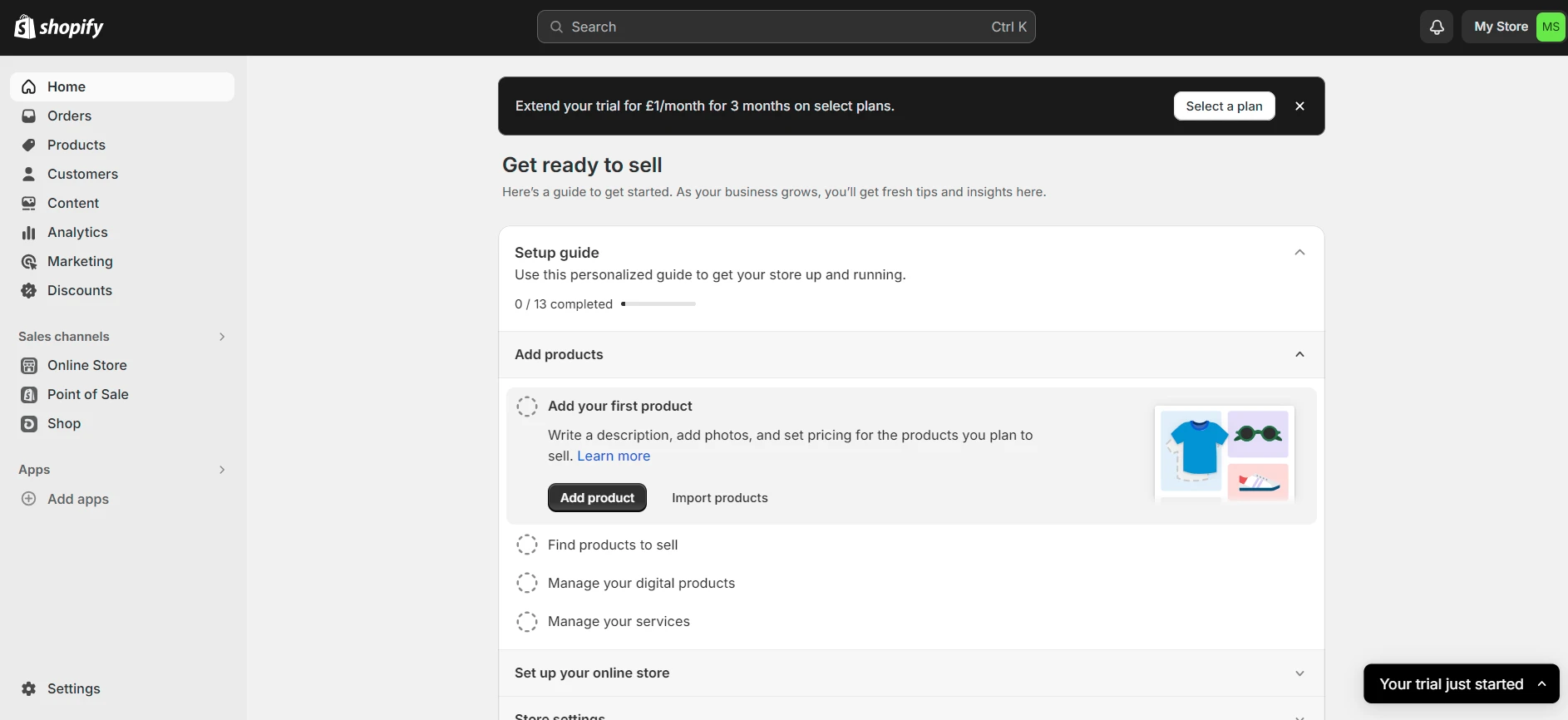
In case you want to experience this utility of Shopify with your current Adobe Commerce store, let’s consider our Adobe Commerce to Shopify migration instructions
Verdict: It is clear that Shopify can make your customizations easier to complete in comparison to Adobe Commerce.
#4. Themes and templates
Adobe Commerce themes
Adobe Commerce only offers you 3 free themes, which makes it difficult to find the best option to design for the store. From our experiences, you nearly create your theme on your own on this platform, even using coding knowledge to attain the finest results. Or else, you can try with paid templates, with a fee of up to $499.
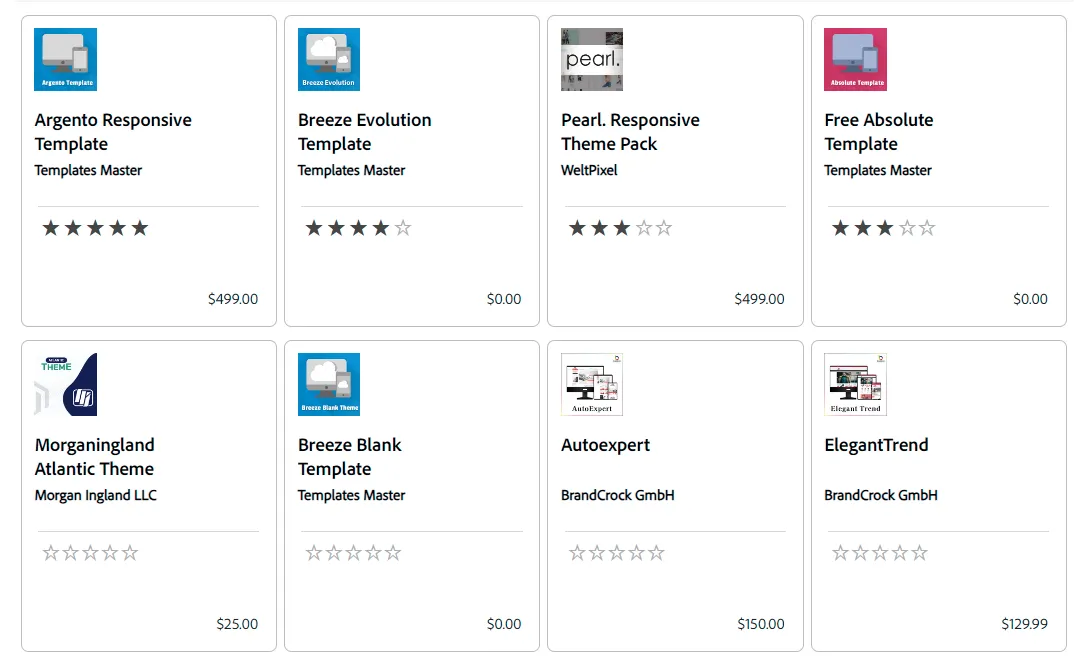
Shopify themes
One of the most wonderful things when using Shopify is that you can reach a wide collection of themes. In Shopify them store, users can find more than 140 options, with various layouts and topics.
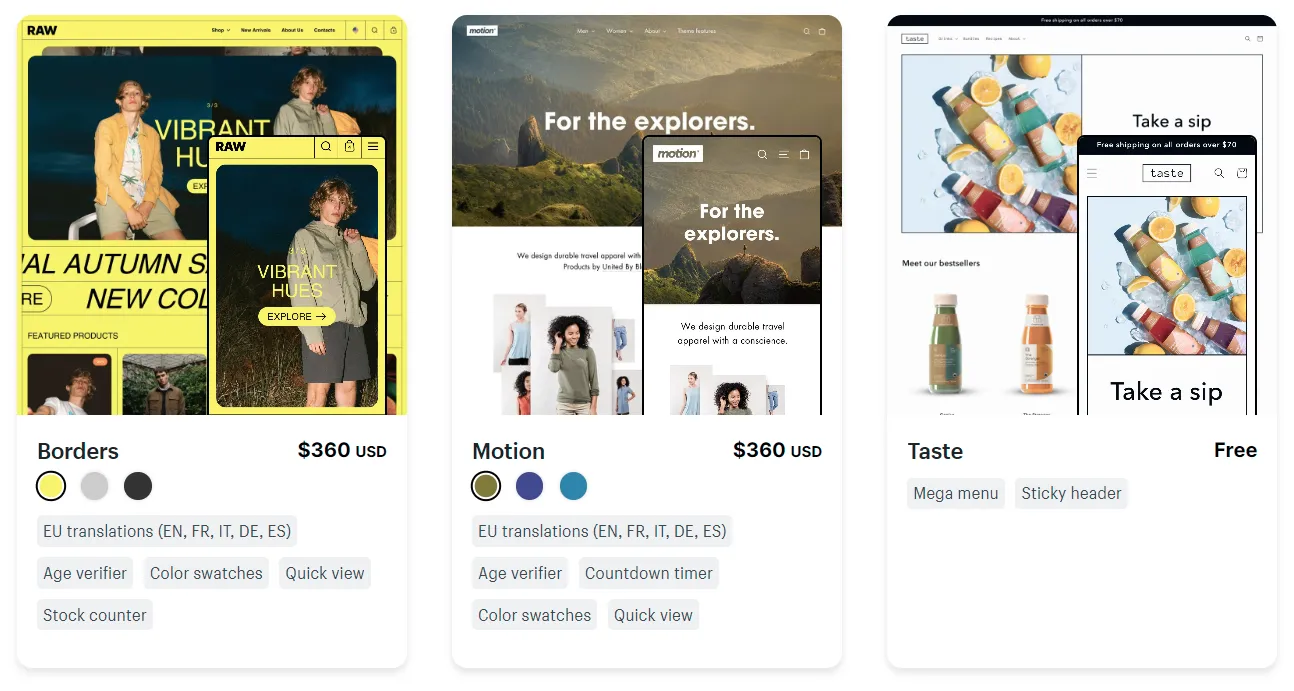
Besides some non-fee templates, you can pay from $170 – $380 to select a more suitable design for your business image.
Verdict: In our opinion, Shopify exceeds Adobe Commerce in this concern due to a huge library of themes. Plus, you don’t need any code to customize Shopify themes.
Seamlessly Migrate Your Store from Adobe Commerce to Shopify
Our team of experts can safely transfer your business data, products, customers, and orders to unlock more growth in this promising eCommerce platform. Let us provide a customized migration for you!
#5. Apps and extensions
Adobe Commerce extensions
At the moment, merchants can access over 4000 extensions in Adobe Commerce Marketplace, with various categories. Before installing anything for your store, let’s consider its cost in advance since the usage cost is not cheap. Below are 7 highly recommended options to gain business sales:
- Zendesk Connector
- TaxJar Sales Tax Automation
- Smart One Step Checkout for Magento 2
- Magento Multi Carrier Shipping Label & Rates With Tracking
- Mautic Integration
- Amasty Shipping Suite
- Google One Tap Login
To discover more about how these extensions run, let’s refer to our 7 Best Magento Extensions reviews.

Shopify apps
When evaluating Adobe Commerce vs Shopify, we were amazed that Shopify can offer you more than 8,000 apps, including free and paid. It is ideal for you to enhance your store’s performance, as well as sales.
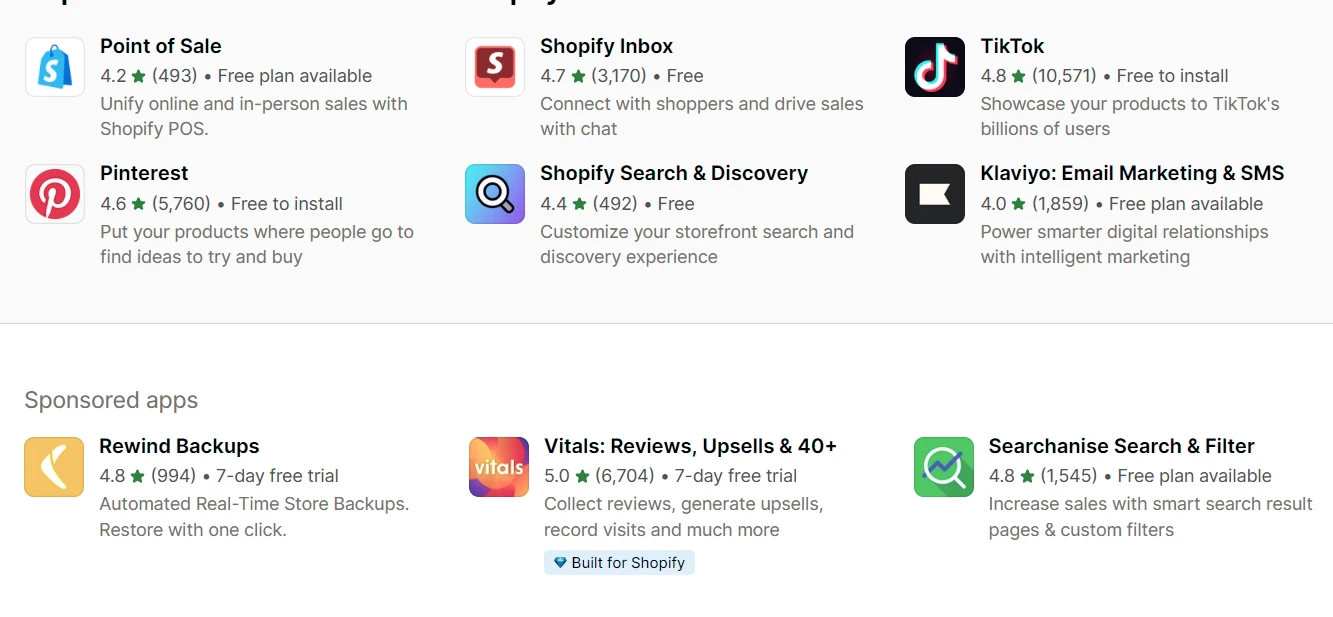
If you want to add new apps to your Shopify store, let’s take a look at our best Shopify apps to get the most optimal options.
Verdict: Undoubtedly, Shopify is a winner in a comparison of the Magento Commerce vs Shopify additional options.
#6. Sales features
Sale features of Adobe Commerce
On Adobe Commerce, merchants can track regional brands, all B2B/B2C stores, and multi-brands effectively. Besides that, this platform also supports other features such as setting up localized pricing for each market, unlimited expansion stores, and activating multi-source inventory.
Regarding merchandising, Adobe Commerce allows you to display 7 main kinds of products in your store. They comprise simple, configurable, bundled, downloadable, virtual, grouped, and gift cards. Besides that, you can use Magento Enterprise Edition to establish new rules to collect different products into respective categories. It is easy for you to manage your total amount of orders and products.
Sale features of Shopify
Shopify limits the number of additional stores on this platform, even when you use Shopify Plus (maximum 9 stores). Besides that, you hardly use Currency Converter in case you don’t transfer through Shopify Pay. It is not convenient for both customers and e-merchants.

However, this platform still provides plenty of powerful eCommerce features such as multi-store inventory, POS, payment gateways, etc.
Verdict: From our experiences, when comparing Adobe Commerce vs Shopify in this concern, the former option exceeds much further.
#7. SEO
Adobe Commerce SEO
Adobe Commerce is one of the leading eCommerce platforms that makes your SEO promotion easier. In fact, you can freely modify SEO elements, as well as its structure to get the finest results for your store in the public sight. We also recommend you read SEO Adobe Commerce documentation to learn how to optimize your site better.

When running a store on this platform, you can build your domain under the format of a sub-directory without using local ccTLD. This is especially effective in updating any newest things from the external environment.
Shopify SEO
Due to a web-hosted platform, Shopify doesn’t allow you to modify any structure, including URL, catching heater, or strict rules relating to products. Thus, you will find it difficult to gain SEO value with this platform.
Verdict: It is clear that Adobe Commerce is more outstanding than Shopify thanks to flexible SEO structures.
#8. Customer support
Adobe Commerce support
With Adobe Commerce, you need to pay a certain to get support from the professional team. Normally, this service cost is not small to adopt. However, you can visit its Commerce Help Center for useful tips for managing a store on this platform.
Shopify support
You can contact the Shopify support team working 24/7 whenever you have any problems. Plus, there are other methods to get assistance from Shopify, such as live chats, phone, or email. This means that it is more flexible compared to Adobe Commerce.
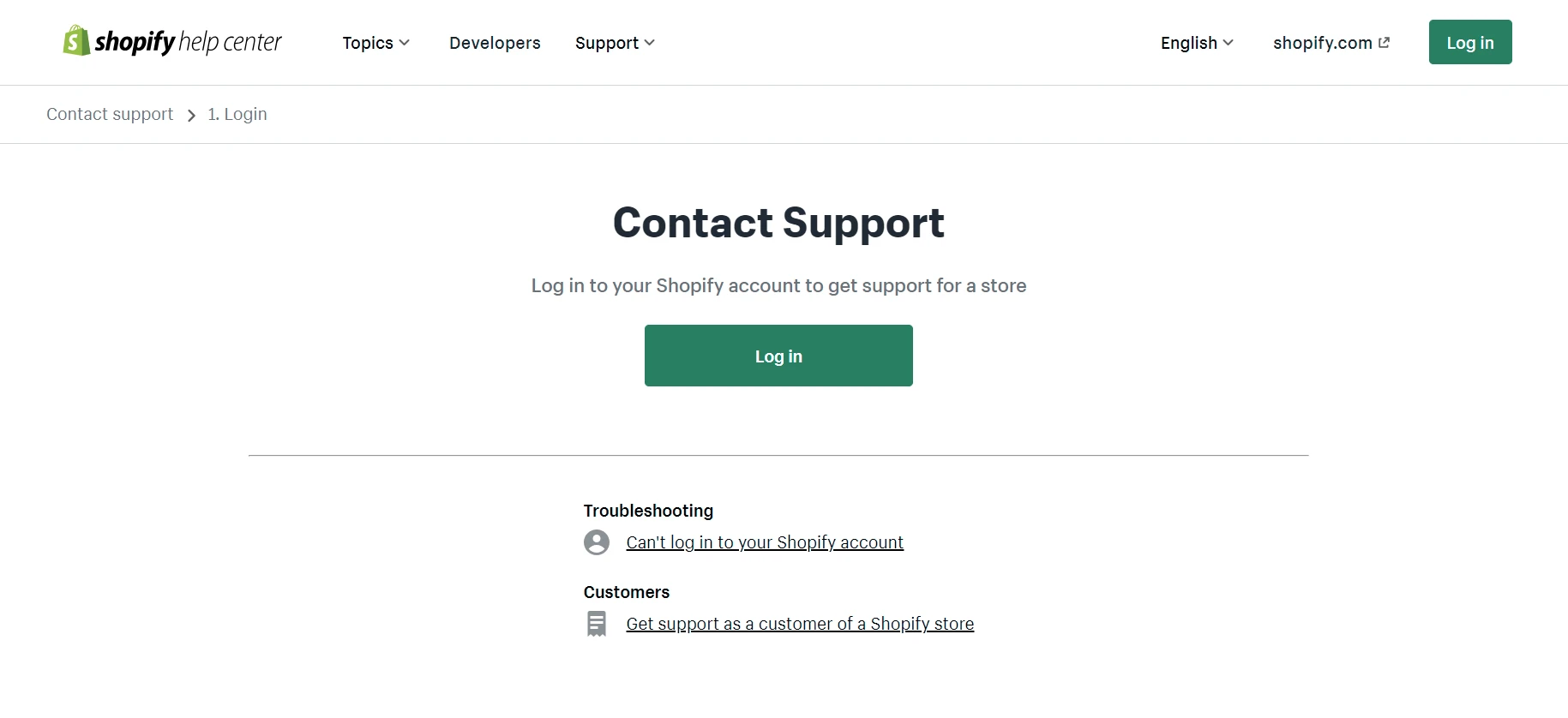
Generally, the cost of support services is one of the main important reasons making the Magento vs Shopify pricing increase. Thus, keep in mind that let’s consider all things to optimize your budget.
Verdict: In this concern, Shopify is surely the winner thanks to supporting various contact methods, ranging from chat box to phone.
With our detailed comparison of Adobe Commerce vs Shopify above, you have a proper decision to run your business plan.
Adobe Commerce vs Shopify: Which One Is Better?
We consider that Shopify is more suitable for small or medium stores, and non-technical e-merchants. Additionally, if your business model is not extremely complex, this solution might be considered to be used for a long time. Currently, you can find a range of common sites running on Shopify such as Brilliant Business Moms, Gymshark, and The Farmer’s Dog.
By contrast, Adobe Commerce is highly recommended to experience in case you need to build a large or cross-border store, with a huge revenue. Basically, the cost to run a new store on this platform is relatively high, but you can reach unlimited variants. Some outstanding B2B brands using Adobe Commerce can be listed like ACME, Alibaba, Amazon, and Massey Ferguson.
If you have a plan to migrate your current Magento store to Shopify to save your budget, don’t miss following our Magento to Shopify migration guide.
Save Time Migrate Store Data to Shopify
Trusted specialists streamline migrations that actualize ambitions.
FAQs – Adobe Commerce vs Shopify
[sp_easyaccordion id=”70056″]
Conclusion
We have just provided a full comparison of Adobe Commerce vs Shopify in several outstanding eCommerce concerns. Remember to always evaluate your business growth carefully to make the best decision for your online store.
LitExtension, the #1 Shopping Cart Migration Expert, hopes you understand Magento Commerce vs Shopify in-depth. Check out our LitExtension Blog or join our Facebook Community Group for more valuable insights.
